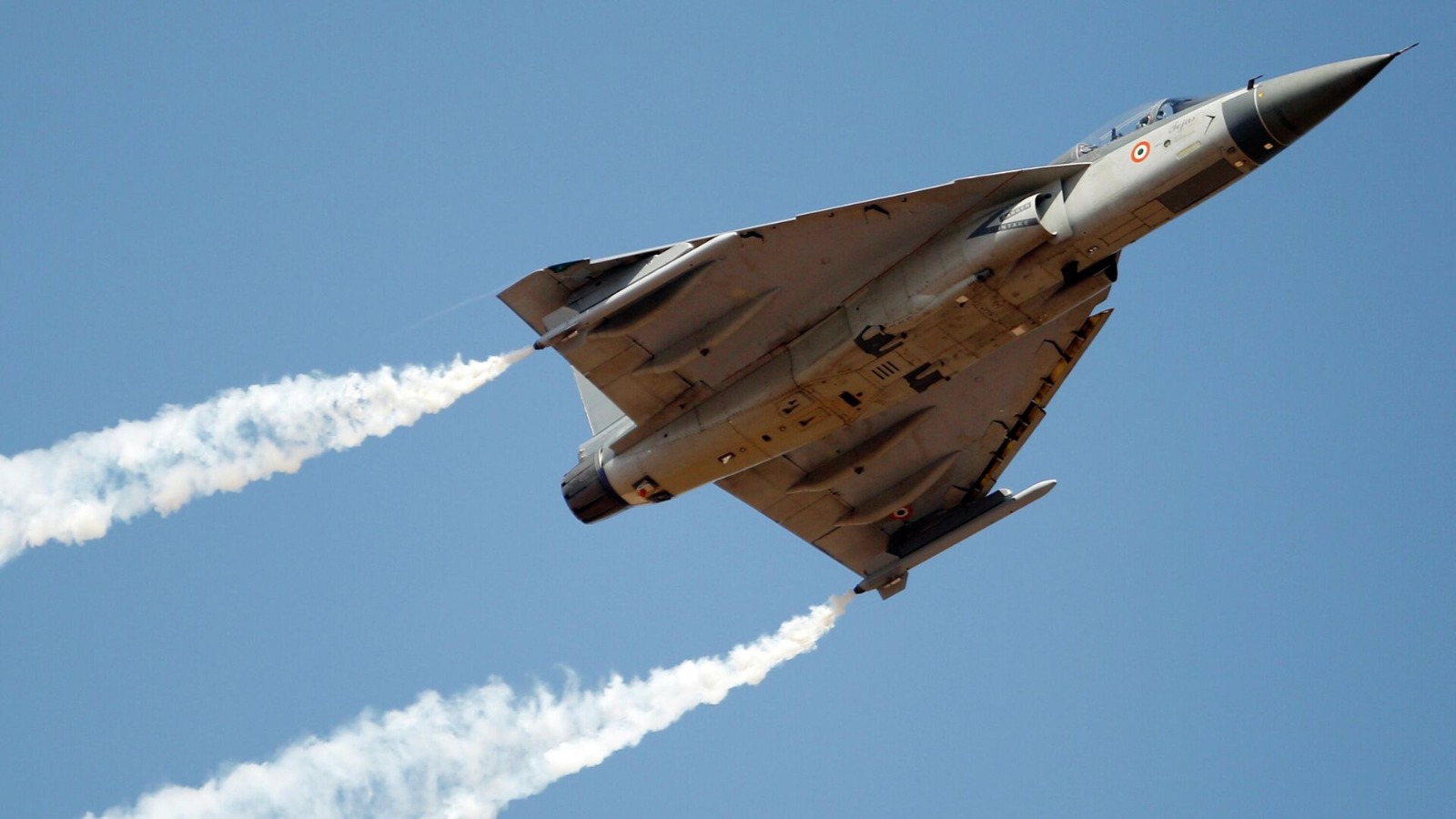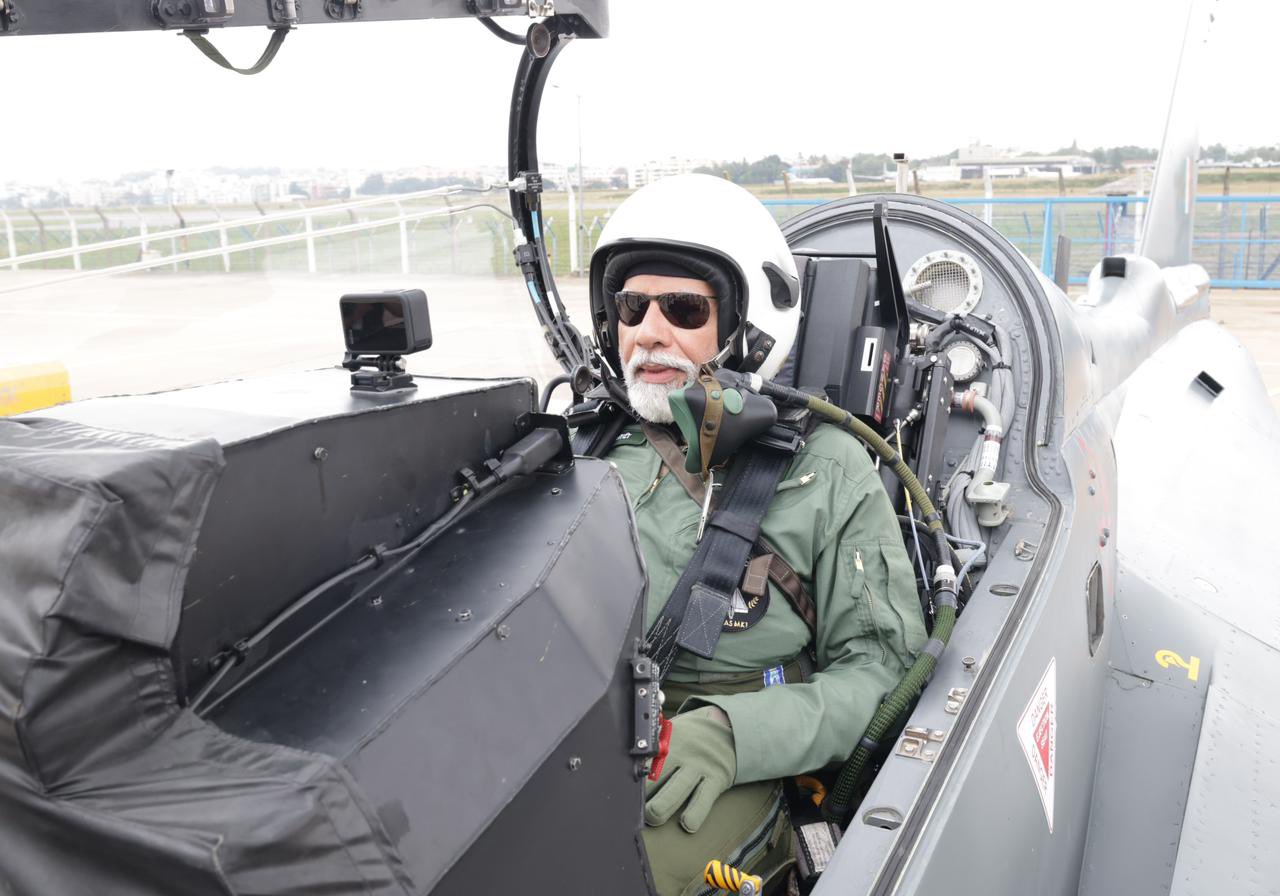The new variant of Light Combat Aircraft (LCA) ‘Tejas’ Mk1A will be taking to the skies by the end of this month. It will be delivered to the Indian Air Force (IAF) after its personnel undergo basic training with the aerospace maker.
LCA’ Tejas,’ meaning ‘brilliance or radiance,’ has been the prized production of the Indian Aerospace maker Hindustan Aeronautics Limited (HAL). The fighter jet, which has taken a long time in development, has fuelled the country’s ambition to design, develop, and deploy an Indian fighter jet.
Tejas catapulted India into the elite group of countries that have demonstrated the capability to develop their 4th generation fighter jets, equipped with electronic fly-by-wire control systems, onboard situation awareness displays, and over-the-horizon strike capabilities.
Now, with LCA Mk 1A, the HAL will demonstrate the maturity of the technology.
As reported by the EurAsian Times earlier, the Number 3 Squadron of the IAF named ‘Cobras’ will be the first unit to operate LCA Mk 1A as it retires its MiG-21 Bisons.
An official told the EurAsian Times, requesting anonymity: “By the end of February, the LCA MK1A is expected to fly, and it will straightway deliver it to the IAF. The IAF may do some training at HAL Bangalore.”
The Mark 1A will have more than 40 improvements from the Mark 1 that are already operational. The new variant of Mark1A has improvements such as air-to-air refueling, beyond-visual-range or BVR capabilities, and the capacity to jam enemy radars.
The IAF has placed orders for 83 LCA Mk1A aircraft in 2021, and the government has cleared decks for an additional order of 97 LCA MK 1A. The first version of the aircraft was inducted into the IAF in 2016.
Currently, two squadrons of IAF, 45 Squadron and 18 Squadron, are fully operational with LCA Tejas. In the coming years, Tejas will be the largest fleet of fighter aircraft to be operated by the IAF.
HAL currently can build 8 LCA aircraft per year. This is being augmented to 16 aircraft every year by 2025 and further to 24 aircraft every year in the next three years.
The deliveries of LCA MK 1A are likely to be spread over the next four years as per the schedule. The IAF is banking to a large extent on the LCA Tejas to make up for the deficiency in fighter squadrons.
The LCA MK 1A will make up for the phased-out MiG-21s, MiG-23, and Mig-27 fighter jets. The force has planned to retire its MiG-29s, followed by Mirages and Jaguars in due course of time. The indigenous LCA Tejas will form the bulk of the IAF’s muscle in the coming decade.
About half of the Mk1A Tejas fighter jets will carry the Israeli AESA radar, which is more advanced than the pulse Doppler radar mounted on the trainer jets. The remaining LCA MK1A, starting from around 2026, will carry the indigenously developed top-of-the-line Gallium Nitride Uttam AESA radar, which is exponentially more powerful than Gallium Arsenide radar.
The Gallium Nitride Uttam AESA radar will allow a Tejas jet to land a mightier punch much earlier and from much farther away.
These fighter jets are to be armed with the indigenous air-to-air Astra missile. The Astra air-to-air missile is among the most sophisticated missiles in the world. In August 2023, the LCA successfully fired the Astra indigenous Beyond Visual Range (BVR) air-to-air missile off the coast of Goa.
More than $1.1 billion have been sanctioned for the development of LCA Mk 2, an updated and more lethal version of LCA Tejas. To further promote indigenization, including the aircraft engine, the Transfer of Technology for manufacturing the GE engine in India was negotiated with GE during Prime Minister Narendra Modi’s visit to the US in June 2023.

The Coming Of Age Of Tejas
A dream seen by Indira Gandhi and realized by Narendra Modi. It was in 1984 that the program to develop an indigenous fighter jet started under the leadership of Prime Minister Indira Gandhi. It took another 17 years before the prototype undertook its maiden flight. And it took another 15 years for the IAF to induct the combat jet.
The biggest handicap the Tejas has so far has been that it is not combat-proven and has never faced a challenge, as its Indian peninsular deployment meant it is a peace-time combat jet.
But all that could change if Tejas is permanently deployed in one of India’s forward air bases facing west or north, and it would need to patrol the skies over India’s two volatile borders.
The IAF has already begun sending the existing two LCA squadrons on detachments to forward air bases along the western and northern frontiers, as was witnessed recently with a squadron in Awantipur in Jammu and Kashmir for training.
It is also aggressively pushing to sell the LCA to foreign air forces. The confidence of the IAF in the flying machine has been demonstrated by its willingness to deploy it to forward bases.
Prime Minister Modi also gave his stamp to the project after he flew in the twin-seater Tejas at HAL in November 2023. This was the first sortie in any fighter jet by an Indian prime minister.

After this, the only milestone remaining for Tejas is to bag a foreign export order, for which India has been putting its complete diplomatic force behind it.
Unlike its regional rivals China and Pakistan, India did not face any problems in sourcing components for its fighter jet. The big-ticket item it has is the US engine powering it.
China’s jet fighter development programs have been repeatedly held back by Russia’s unwillingness to supply high-performance engines for fear of Chinese reverse-engineering. Key components of Pakistan’s locally manufactured JF-17 are entirely sourced from China, as is the design.
Tejas has already been giving tough competition to JF-17 in the international market, and the Mk-1A variant will bring more firepower to the fight.


